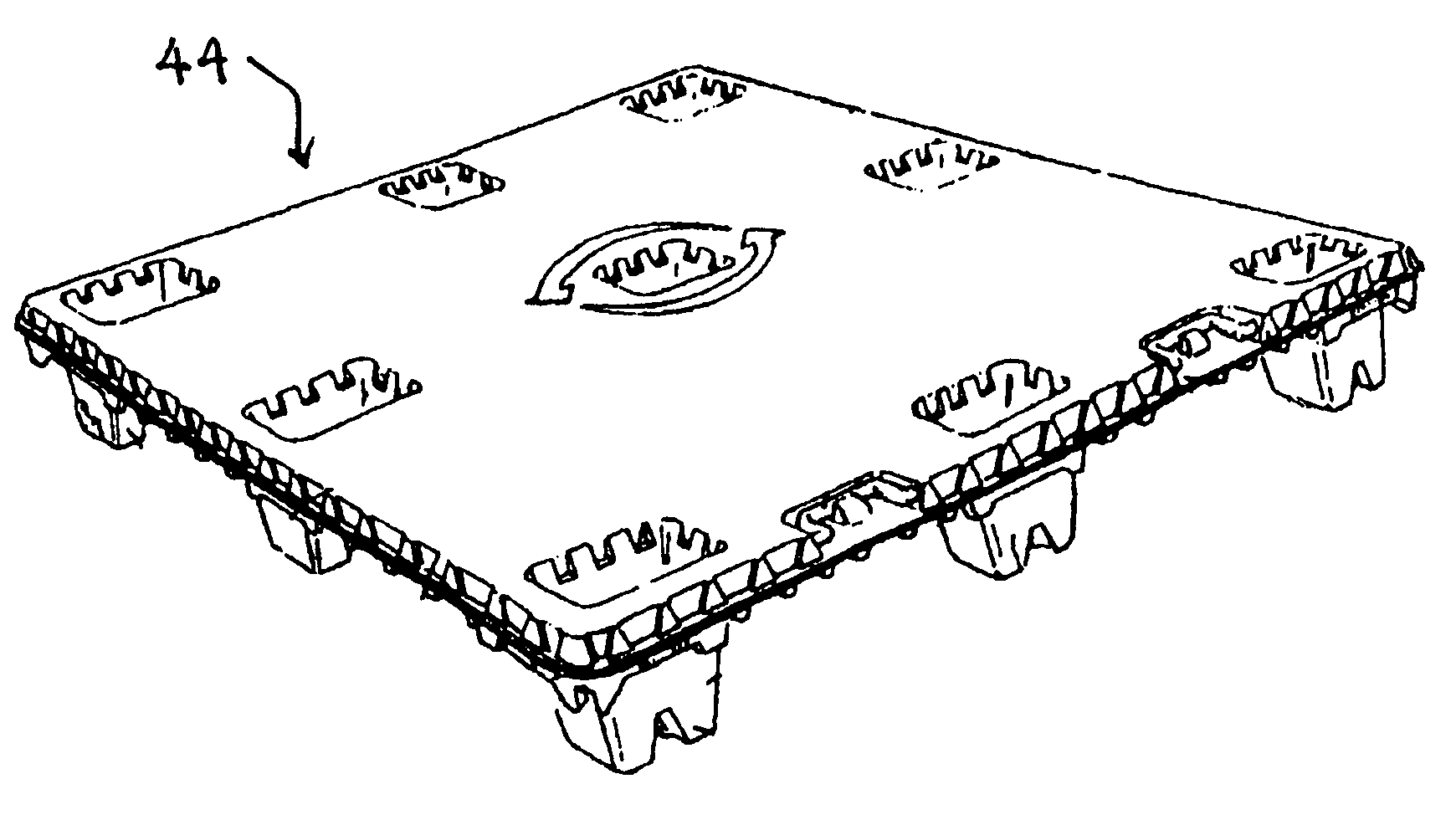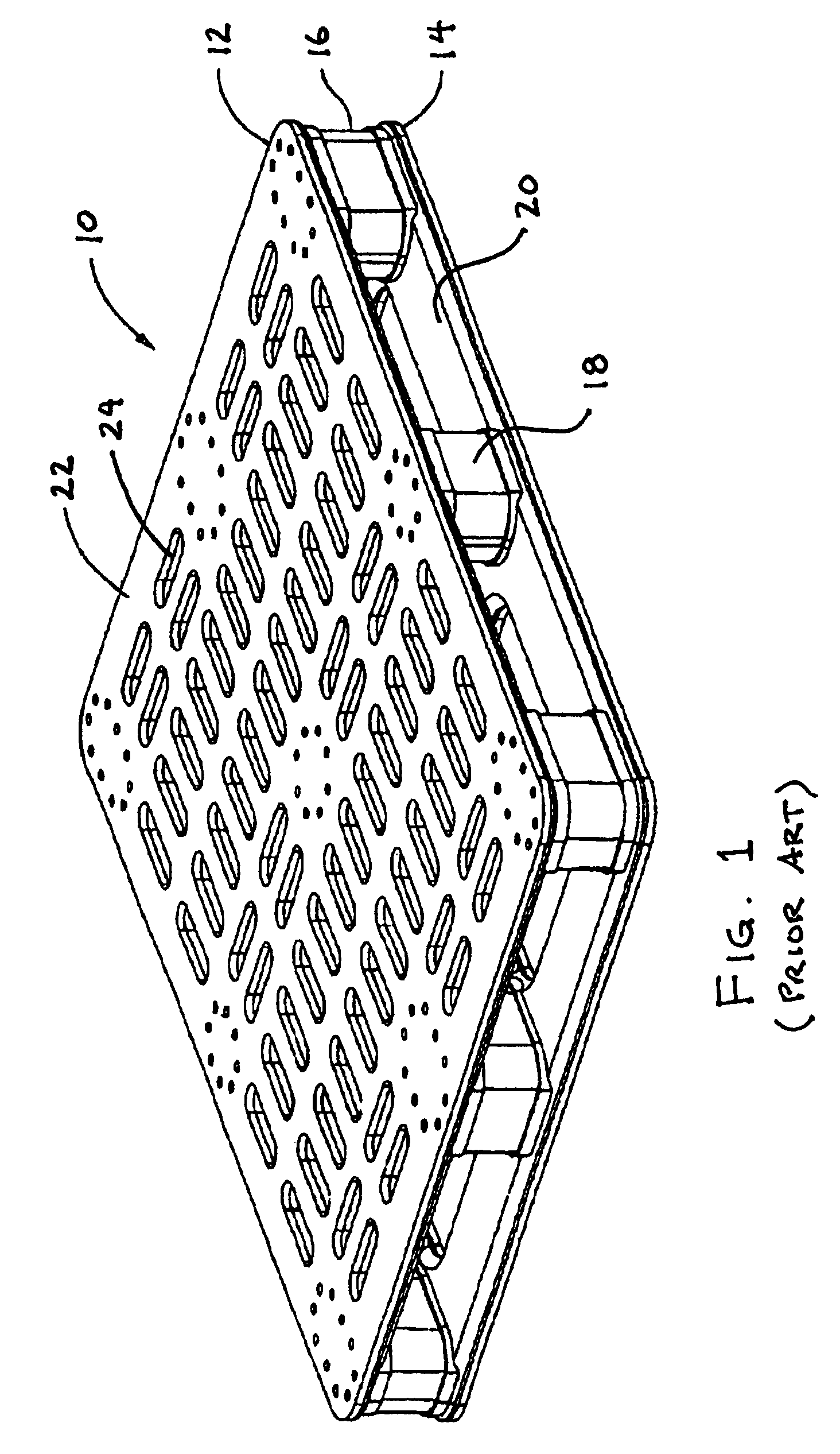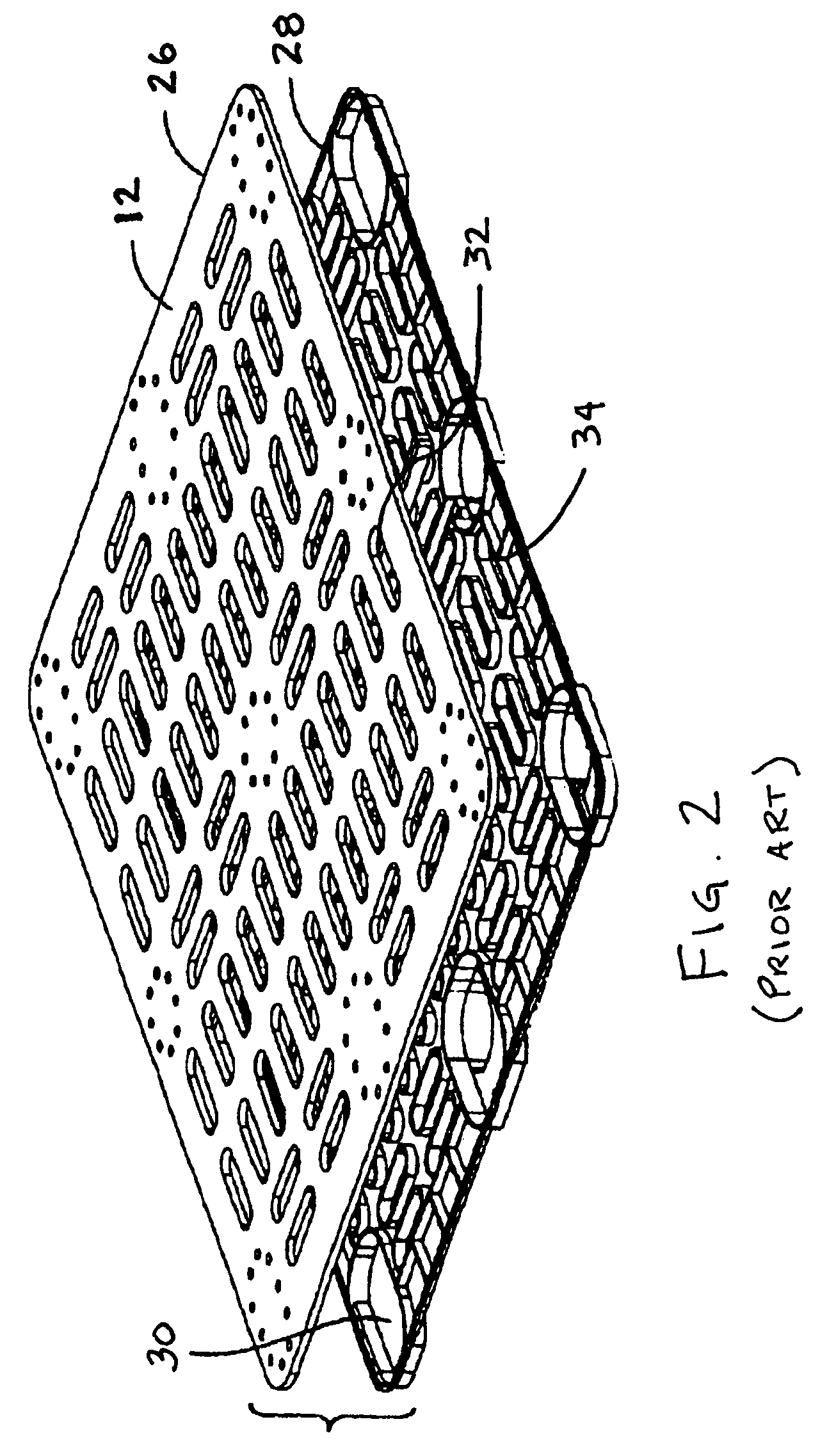Fire resistant plastic pallet with low radio frequency resistivity
a radio frequency resistivity and plastic pallet technology, applied in the direction of rigid containers, instruments, transportation and packaging, etc., can solve the problems of reducing the service life of the pall
- Summary
- Abstract
- Description
- Claims
- Application Information
AI Technical Summary
Benefits of technology
Problems solved by technology
Method used
Image
Examples
Embodiment Construction
[0074]The fire resistant apparatus of the present invention is employed with apparatus similar to that illustrated in U.S. Pat. No. 6,718,888, which discloses a fire resistant pallet. The pallet includes a first polyolefin layer having intumescent materials and a co-extruded second layer. The pallet utilizes a moldable intumescent resin particularly suitable for thermoforming applications and amenable to deep draw ratios of 400%, which is disclosed in U.S. Pat. No. 5,834,535.
[0075]Samples of a plastic sheet that include a halogen free intumescent material mixture that otherwise resembles the composition disclosed in U.S. Pat. No. 5,834,535 were laminated over a halogen free layer of high density polyethylene material. The mixture simulated an externally facing co-extruded plastic wall. The samples were tested according to ASTM E1354 and found to have an average peak heat release rate of 203 kW / m2. This high level of fire retardation is significantly more effective than ordinary fire...
PUM
| Property | Measurement | Unit |
|---|---|---|
| frequency | aaaaa | aaaaa |
| frequency | aaaaa | aaaaa |
| frequency | aaaaa | aaaaa |
Abstract
Description
Claims
Application Information
 Login to View More
Login to View More - R&D
- Intellectual Property
- Life Sciences
- Materials
- Tech Scout
- Unparalleled Data Quality
- Higher Quality Content
- 60% Fewer Hallucinations
Browse by: Latest US Patents, China's latest patents, Technical Efficacy Thesaurus, Application Domain, Technology Topic, Popular Technical Reports.
© 2025 PatSnap. All rights reserved.Legal|Privacy policy|Modern Slavery Act Transparency Statement|Sitemap|About US| Contact US: help@patsnap.com



